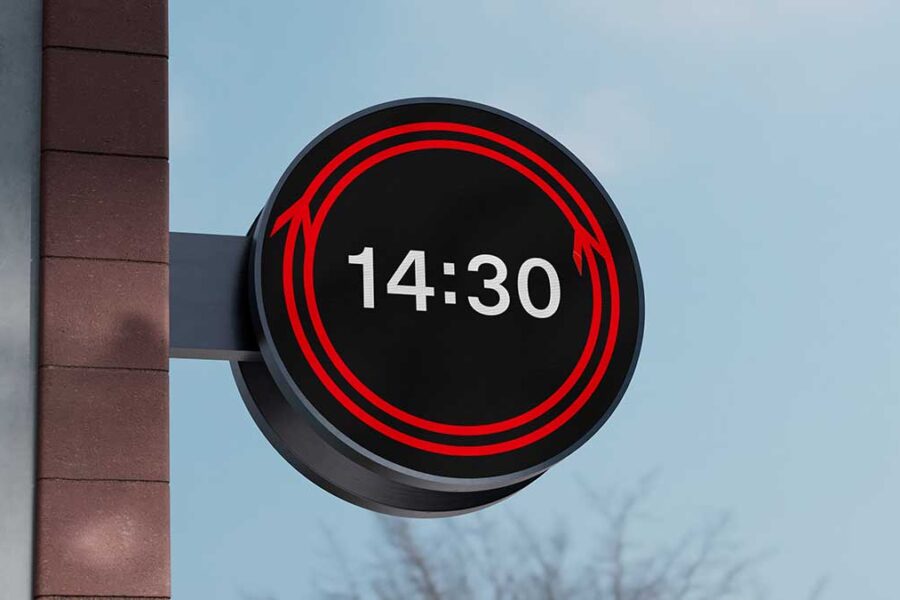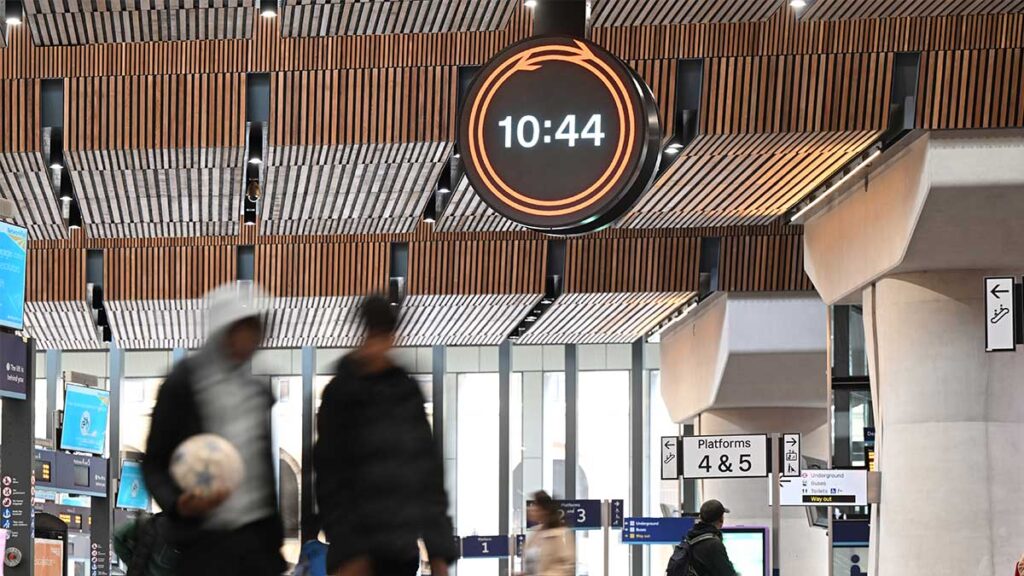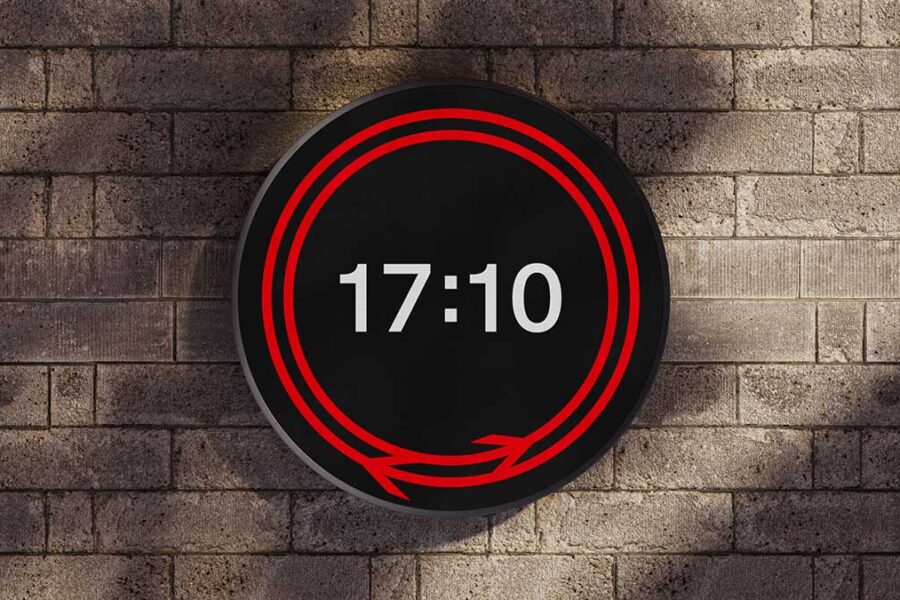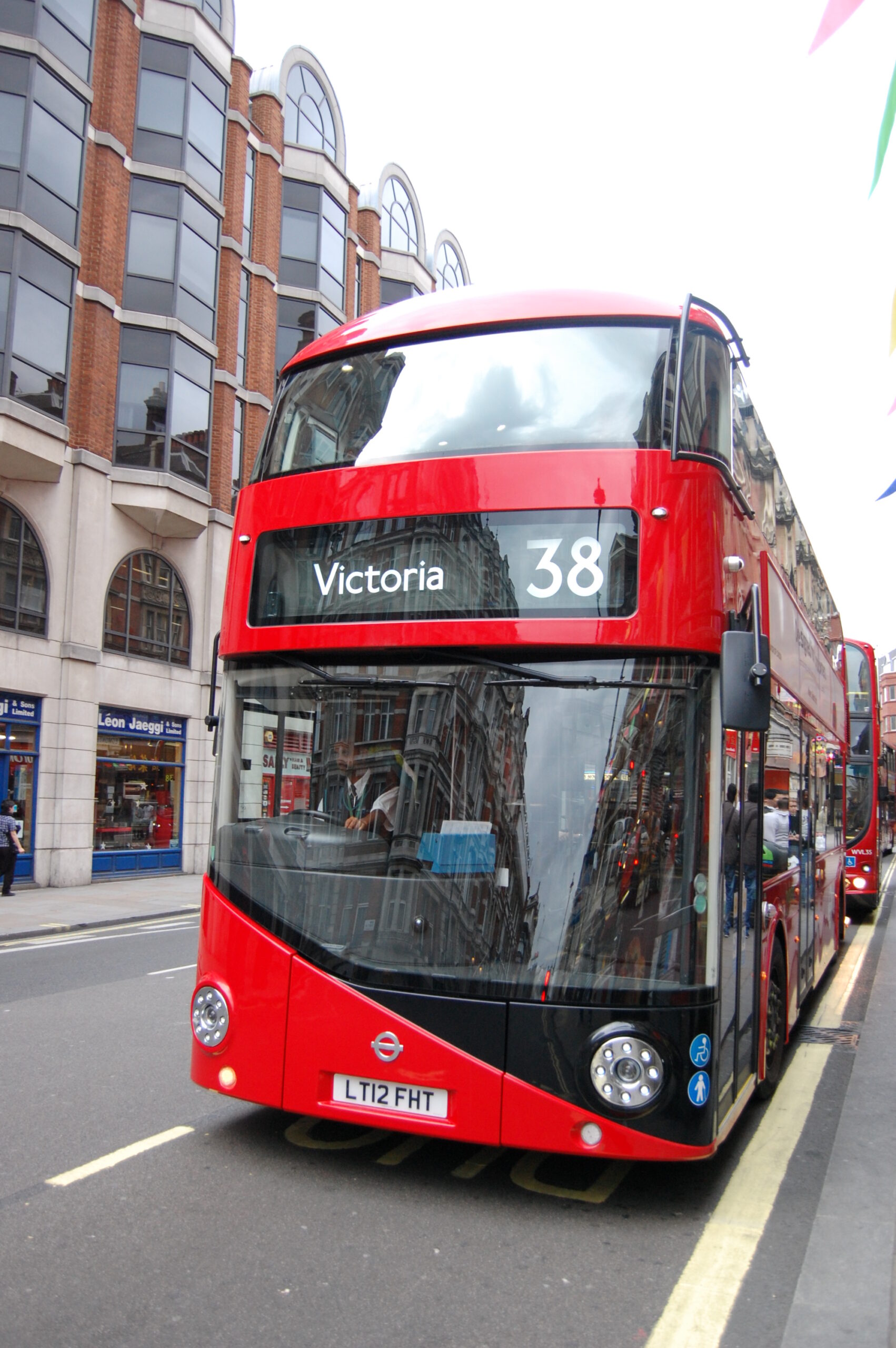The unveiling of a brand new design of clock for the railway might not sound like much of a big deal at first, but it really is.
Let me tell you why.
Aside from the design of Rail Clock – we’ll get on to that later – a new timepiece for the national network is quite simply, a sign of things to follow.
See it not as a clock, but a direction of travel for Great British Railways. There’s still much that we don’t know about how GBR will pan out just yet, but the commissioning of what I’m sure will become an icon for the railway in the future is the clearest indication yet of the direction of travel.

Firstly, the Double Arrow. It’s back – with a vengeance.
We’ve seen the legendary symbol returning – rather slowly, surely, nonchalantly, even – over the past few years. A steady drip, drip, drip back into the public consciousness (not that it ever really left). Nick Job’s excellent reworking of the symbol for modern applications alongside Rail Alphabet 2 has given it a fresh new lease of life.
But this is the first time in a very long time that we’ve seen it used with intent – as a stylish, unifying and practical symbol of the railway. It’s back with a bang.
I don’t have any ‘inside knowledge’, but I’d be willing to bet my house that you’ll see the Double Arrow return to the side of trains at some point over the next few years.

So, about that clock, then.
Well, Rail Clock is a masterclass in meaningful simplicity.
Created by WPP brand design agency Design Bridge and Partners, it’s the result of an international competition run by Network Rail in partnership with the Royal Institute of British Architects and the Design Museum.
It features the two halves of the Double Arrow circling around two red tracks, meeting at the top and bottom of the clockface every 30 seconds. Margaret Calvert’s Rail Alphabet 2 shines brightly in the centre – showing just hours and minutes on the 1.8 metre-diameter version which has been unveiled at London Bridge, to be joined by seconds on information screens and at platforms where those seconds really count.
Speaking of London Bridge – what a location to launch a new clock. It was home to only the second electrically-controlled railway clock in the world, installed in 1852, linked to a master clock at the Royal Observatory in Greenwich. Rail Clock will be linked to industry digital systems giving one version of the truth across all formats. It is truly unifying as a piece of technology.
A good transport clock can be a national symbol of pride.
Just look at another famous example, the clock of the Swiss Federal Railways for proof of how timeless a timepiece can be. And who can forget the legendary clack, clack, clack of the seconds counting away on those fondly-remembered clocks of the long-since departed Network SouthEast?
Some of those NSE clocks still survive at stations to this day. True veterans.
Rail Clock is right up there with the best of them.
All images credit to Network Rail.




One Response
Great piece Matt, and agree it looks great – can’t wait to see one in real life! Hope seconds continue to feature prominently though – my regular sprints through the barriers at Leeds attest to the maxim that every second counts!